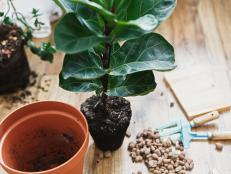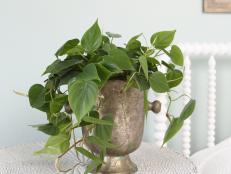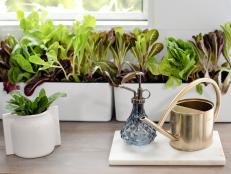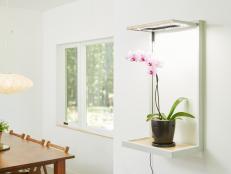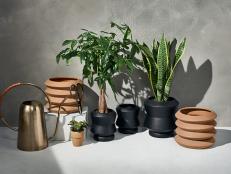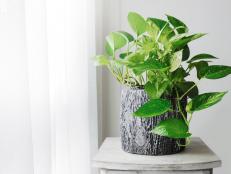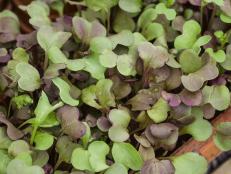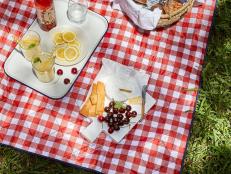Resorting to Tropicals for Houseplants
When it's cold and dreary outside, it's fun to dream of spending a vacation in an exotic locale. If you can't actually make the trip, though, bring the tropics to your home.
The plants listed below make beautiful houseplants. In their native settings, indigenous people use them for additional benefits--clothing, shelter, food and medicine.
Pineapple
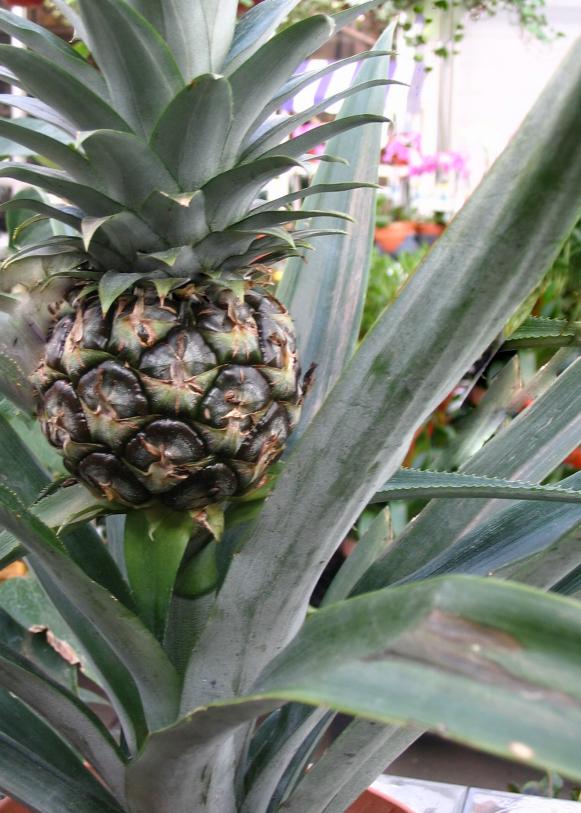
(Ananas comosus)
A popular citrus fruit native to South America, pineapple is sure to be a conversation starter when grown as a houseplant. This bromeliad has silvery-green, spiky foliage and a striking rosy-pink to red flower. From this flower comes the fruit that has come to symbolize hospitality and welcome. High in vitamin C, the fruit contains an enzyme called bromelain that's used as an anti-inflammatory and as a meat tenderizer. The leaves contain strong fibers used in making textiles and fishing nets.
Pineapple requires bright light and a moist soil. You can start your own plant from a fresh pineapple purchased at the grocery store. To propagate your own, cut off the leafy top of the pineapple fruit, leaving enough of the fruit to hold the leaves together at the base. Allow this wound to cure for about a week or two. Plant the base of the leafy section approximately one inch deep in a soil mix designed for cacti and succulents. Water well and provide plant with additional humidity. It may take several years for a plant to produce fruit, and even then, it likely won't taste as sweet as ones purchased at the store. For a variegated selection, use A. comosus 'Variegatus'. USDA Zones 10 to 11.
Begonia

This popular genus offers a wide array of flower and foliage colors. The leaf petioles of one species, Begonia glabra, are used by indigenous peoples of South America, including Ecuador and French Guyana, to treat stomach aches. Crushed leaves have been used to soothe the gums of teething babies. Rex, angel wing and tuberous begonias all make excellent houseplants and, if properly maintained, will bloom almost all year long.
In general, begonias prefer moderate to bright light and adequate moisture (be careful not to overwater). Keep plants away from drafts. Try Rex begonias such as 'Escargot' or 'Raspberry Crush' for foliage interest and angel-wing begonias such as 'Looking Glass' for both foliage and flowers. Zones 10 to 12, depending on cultivar.
Caladium
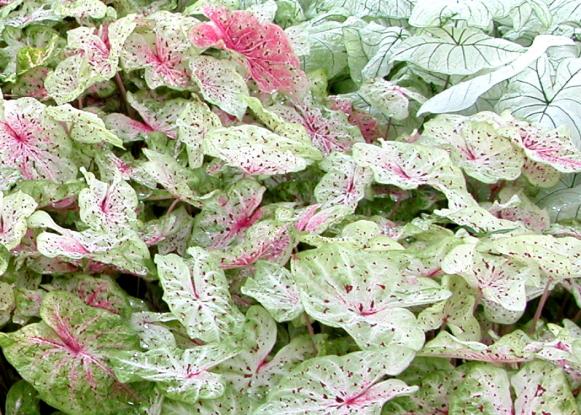
(Caladium bicolor)
According to Francisca Coelho, director of glasshouses at New York Botanical Garden, caladium is used in making love potions and amulets, and it's also used to treat fevers.
Although this tropical rhizomatous plant is excellent for outdoor shade gardens, it also makes a great houseplant. The heart-shaped leaves come in a variety of colors including white, pink, red, green and a mixture of all of the above. Caladiums are great to enliven and brighten up the interior of your home with its vibrant colors. Parts of this plant are poisonous, so keep away from nibblers. To force rhizomes indoors, place on bottom heat (caladium needs temperatures of about 75 degrees F to break dormancy) and provide with adequate moisture and bright, indirect light (for maximum color). Choice selections, including 'Aaron', are available. USDA Zones 10 to 11.
Calathea
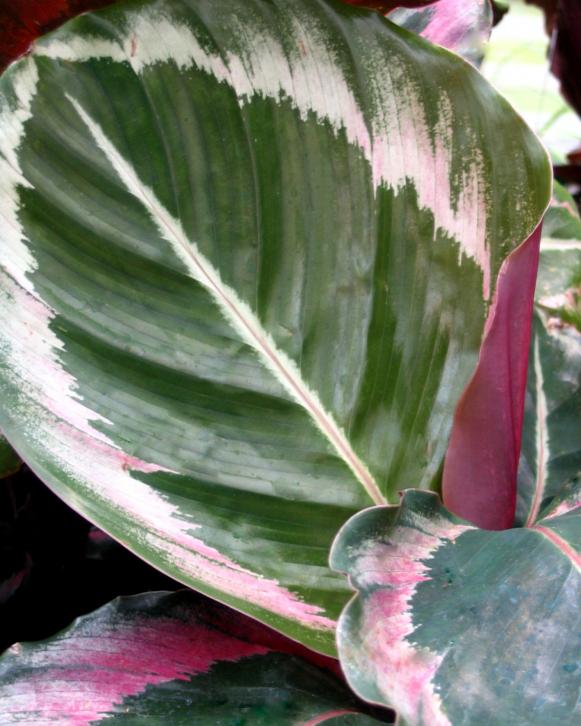
(Calathea roseo-picta)
Calathea comes in a variety of foliage colors. Calathea roseo-picta offers alternating green colors on the top side of the leaves with reddish-purple undersides. In addition to being a lovely houseplant, it has also been used traditionally as an herbal medicine. "Leaves boiled in water are used as a medicine to treat mouth sores," says Coelho.
A common issue when growing calathea is its tendency to have browning leaf tips and edges. This is caused by a sensitivity to fluoride and salts in regular tap water. It can be remedied by providing high humidity (mist or set plants on a moist pebble tray, especially in the dry heat during wintertime) and watering plants with distilled water or rain water. Keep soil moist and place plants in bright, indirect light.
Elephant Ear or Taro
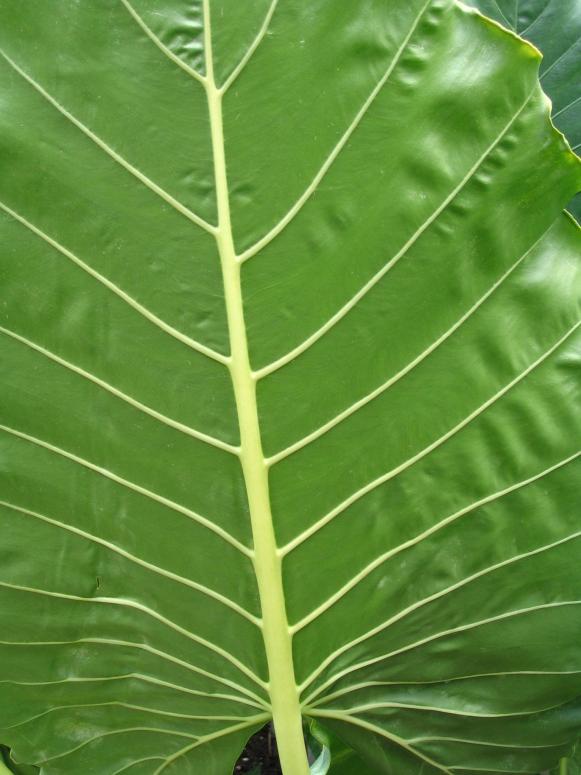
(Colocasia esculenta)
Elephant ear is commonly used to create a tropical effect in the outdoor garden, but have you ever considered using it as a houseplant? Also called taro, all parts of the plant (leaves, stems and corms) are edible, provided they are properly cooked beforehand, and are an important food staple in many countries throughout the world.
To grow indoors, provide taro with lots of sunlight and moisture; it's a heavy feeder so make sure to apply fertilizer. Take your specimen outdoors after the threat of frost has passed. (Since it has been indoors for a while, you may need to acclimate the plant to transition it from the indoor environment to outdoors. 'Black Magic' has black leaves atop dark red stems. USDA Zones (7) 8 to 11.
Ti Plant
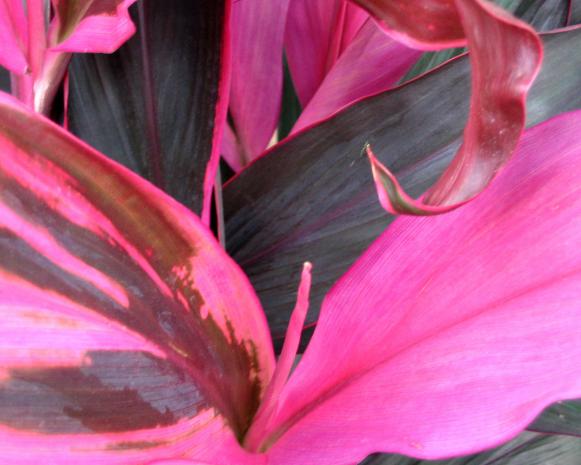
(Cordyline fruticosa)
Planted by Hawaiians for good luck, the colorfully variegated foliage of the ti plant is also used in making leis and floral arranging. The leaves have also been used extensively throughout tropical regions--including Hawaii, Central America, South America and Asia--in food preservation, roof thatching and clothing. Leaf colors offer hot pink, dark purple and green all on a single plant. Although they don't often flower or fruit when grown indoors, hanging clusters of lavender-purple flowers resemble corn tassels and ultimately fade into white, green or red berries. Place near a window where it will get bright indirect light and provide with adequate moisture. It doesn't like cold drafts. USDA Zones 10 to 12.
Sago Palm
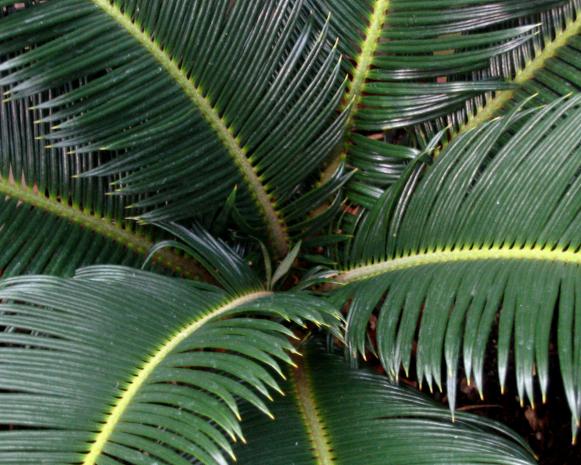
(Cycas revoluta)
A plant that dates back to prehistoric times, sago palm is not a palm but a conifer (needled evergreen). Medicines derived from the needles are used in treating cancer and the seeds are used for rheumatism. Caution, however: parts of this plant are toxic so you'll want to keep out of reach of young children and pets.
To grow indoors, provide bright light and adequate moisture. Without adequate light, new growth will be spindly and unattractive. USDA Zones 8 to 10.
Mosaic plant

(Fittonia verschaffeltii)
Mosaic plant is an interesting tropical whose leaves look like individual pieces of mosaic art. Deeply defined leaf veins are etched with pink, white or green, resembling stained glass. It too has uses outside of serving as a houseplant. "An infusion of leaves are used in Ecuador by native peoples to relieve toothache," says Coelho.
This petite plant (which reaches only about three to six inches tall) can be used in dish gardens, terrariums or companion plantings for bonsai. When grown indoors, be sure to provide mosaic plant with plenty of soil moisture and humidity. Also place in indirect or fluorescent light. It doesn't perform well in dry air (especially in the wintertime) or with bright, direct sunlight. Control growth habit by pinching back when it starts to get spindly. USDA Zones 10 to 11.
Banana
(Musa acuminata)
Banana is the fourth largest fruit crop in the world with a variety of applications, including medicinal and edible uses. In parts of Central and South America and Africa, byproducts of the roots, seeds and pseudostems are used to treat digestive and intestinal problems. When it rains in tropical areas, the banana leaf (when held upside down by the leaf petiole) can be used as an umbrella. Various parts of the banana go into making paper, fiber for clothing, and rafts.
To grow indoors, provide banana with bright light and moderate moisture; bananas are heavy feeders so apply fertilizer every week or two when actively growing. Transplant or take your container outside for the summer and bring indoors for the winter. If your banana plant gets too tall for its indoor environment, cut the pseudostem back by about one-half. In no time at all, you'll have new unfurling foliage. USDA Zones 10 to 12.
Swiss Cheese Plant
(Monstera deliciosa)
Nothing says tropical foliage like Swiss cheese plant, appropriately named for its dissected foliage resembling the holes in a block of Swiss cheese. In tropical regions, Monstera produces an edible fruit that tastes like a combination of banana, mango and pineapple. The fruit can be used to flavor drinks and ice cream. The leaves of M. spruciana are used by the Shuar tribe in Amazonian Ecuador as an anti-inflammatory agent; according to ethnobotanist Dr. Bradley Bennett, it is thought to make an excellent treatment because its leaves are so large that, when heated, they can be applied to treat a large area of the body.
When grown as a houseplant, it may take a while to produce fruit, and the foliage may not be as large or dissected as it would be in its native habitat. However, it is quite attractive when grown in a hanging basket or trained to climb. It does not require lots of light or moisture but will be more vigorous if given ample sunlight and water. M. deliciosa albo-variegata has large dissected leaves with creamy-white and green variegation. USDA Zones 10 to 11.
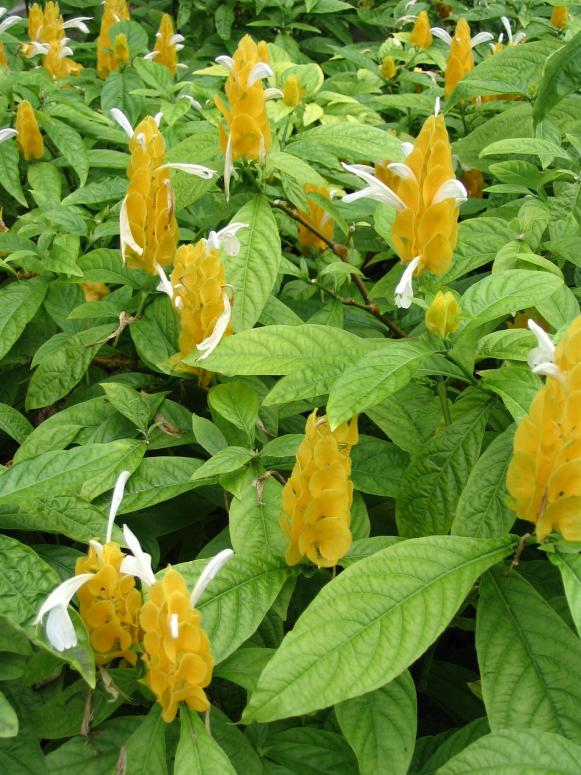
Shrimp Plant
(Justicia brandegeana and J. lutea, also known as Pachystachys lutea)
Shrimp plant has a rather unusual, exotic flower. J. brandegeana has salmon-red and yellow bracts (small-leaf lookalikes) that overlap each other to form a shrimp-like flower. Another common name for J. lutea, golden candles, refers to the upright golden overlapping bracts. One species is used throughout the Caribbean as a hallucinogenic beverage, while another species is used to treat fever, coughs, colds and hair loss.
Shrimp plant can be grown indoors if it is provided with bright light. Allow it to dry out between waterings. Use as a summer annual outdoors or as a hedge in warmer climates. USDA Zones 9 to 10.
Vanilla Orchid
(Vanilla planifolia)
A tropical paradise isn't complete without orchids. Native to Central America, the vanilla orchid has a long history of cultivation. It was used by the Mayan and Aztec peoples in a drink that included cocoa beans, vanilla and honey.
This orchid is vining so it can be planted in a hanging basket or trained to climb. Flowers are creamy yellow. Since it's an epiphyte, vanilla orchid is drought-tolerant, so it can be watered inconsistently. But be careful not to let it dry out; provide additional humidity by placing it next to a humidifier or onto a moist pebble tray. Put it in a sunny window. Because the orchid flower has to be pollinated to bear fruit, and an extraction process is necessary to obtain the vanilla flavoring, you won't be able to enjoy the "fruits of your labor." However, this plant is easy to care for and a great flowering and vining houseplant. USDA Zones 10 to 11.
Caution: The author does not guarantee or endorse the medicinal uses of the plants described above. Please don't try to consume or use these plants in a manner that could potentially be harmful to your health.

.-Battle-on-the-Beach-courtesy-of-HGTV.-.jpg.rend.hgtvcom.196.196.suffix/1714761529029.jpeg)




